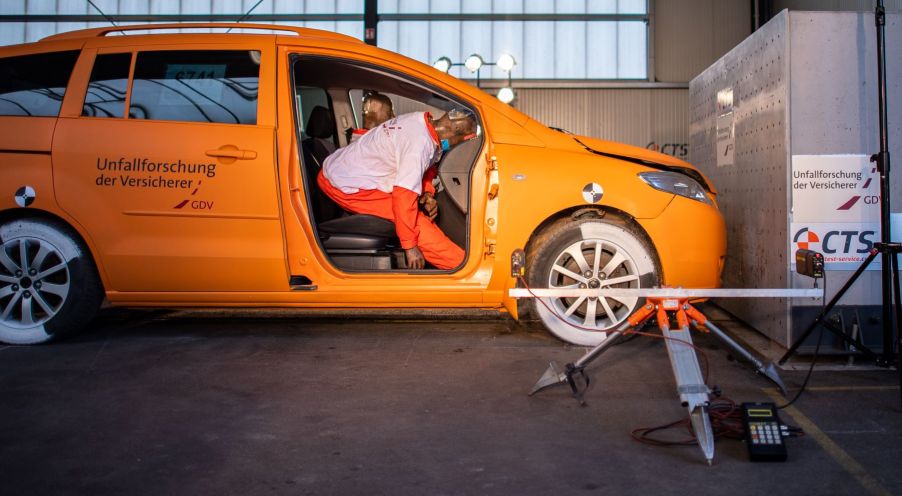
Are Larger Vehicles or Smaller Cars Safer: The Disturbing Truth
The general consensus in the car world is that larger vehicles are safer than their smaller counterparts, and it’s easy to see why. After all, in car accidents involving frontal crashes, the larger size means passengers are often less likely to get hurt. However, this doesn’t account for rollovers and other accident scenarios that don’t involve ramming into other cars head-on.
Consequently, while it’s true that larger cars fare better in collisions, it doesn’t entirely paint a picture of the whole story. So what’s the truth if you’re trying to decide which type of car is right for you? Are larger cars safer in general, or should you take such statements with a grain of salt? In some cases, the safer option may be the smaller car, and the comparisons below should tell you why.
Safety pros and cons of larger vehicles

There are tangible reasons why larger cars are considered safer in most circles. One of them is the larger crumple zone. Generally, larger vehicles like pickup trucks and SUVs have more material and a larger area between the cabin and the front bumper. Consequently, in crashes, this material will act as a cushion and dampen the impact on the occupants.
Next, larger cars are heavier, and according to physics, an increase in mass will have a similar effect on the vehicle’s kinetic energy. Therefore, even if a small car and a bigger vehicle collide at the same speed, the larger vehicle will have significantly more kinetic energy. This translates into the smaller car getting pushed back at the point of impact while the larger car is more stable. Of course, this reduces the forces in the cabin of the larger vehicle; hence the occupants will fare off a lot better than their counterparts.
Nevertheless, larger vehicles also come with significant risk factors where safety is concerned. One example is the center of gravity is higher than in a smaller car. This makes options like SUVs and trucks more prone to rollover accidents.
Another issue is that the longer crumple zone and high driver position limit the field of vision. In fact, according to WTHR, blind spot zones in front of the vehicle could be as large as 15 ft depending on the car model. Nevertheless, it significantly increases the risk of hitting pedestrians, especially small children. Additionally, the blind spots on the side of larger vehicles make it easier to cause car accidents when making turns and lane changes.
Lastly, bigger vehicles typically have more reliability issues, as seen with the middling pickup truck scores on Consumer Reports. These issues can cause further safety hazards for both the vehicle’s occupants and other drivers on the road.
Safety pros and cons of smaller vehicles
As for smaller cars, one of the critical positives regarding safety is fewer blind spots. Consequently, the enhanced visibility makes it easier to spot trouble and avoid accidents. Additionally, most compact car models have a lower center of gravity due to their size. This translates into higher stability on the road despite the lower mass. As such, smaller vehicles are much less prone to rollover accidents. Lastly, manufacturers also seem to fit more safety features into smaller cars for accident prevention, meaning drivers often get a lot of safety for less cost with smaller vehicles.
Nevertheless, the smaller crumple zone at the front of cars is a liability in the event of a collision with larger vehicles and even stationary objects. There is less cushioning, making it easier for the impact to reach the cabin and its occupants. Also, as mentioned above, smaller cars tend to get pushed back in accidents that involve bigger vehicles. This compounds the forces in the cabin and increases the risk of injury or death.
What about crash test ratings?
Crash-test ratings can provide some insight into the safety of a particular car model, especially compared to others in its size class. However, these ratings are not comparable across size classes. As such, in collisions involving similarly rated vehicles, occupants of the larger vehicle tend to fare better. Ultimately, this means you’ll be safer in a larger vehicle if you collide with other cars. That said, given that these cars are more prone to different types of accidents, you can’t claim them to be safer overall than smaller vehicles.
On the other hand, smaller cars fare worse than their larger counterparts in head-on collisions and can thus be pretty unsafe. However, their saving grace is that avoiding accidents should be much easier, especially with the lower center of gravity, enhanced visibility, and more compact size.


